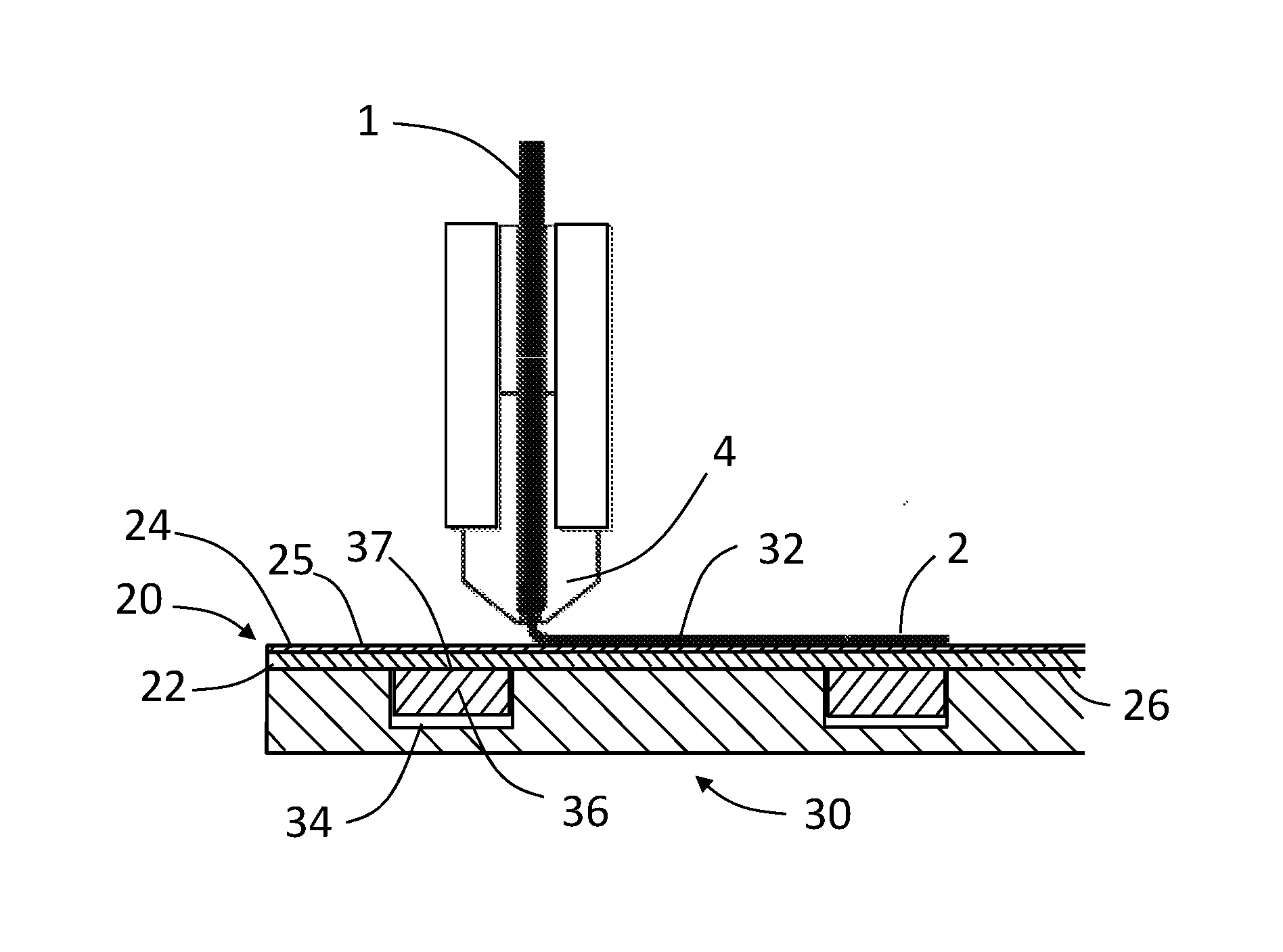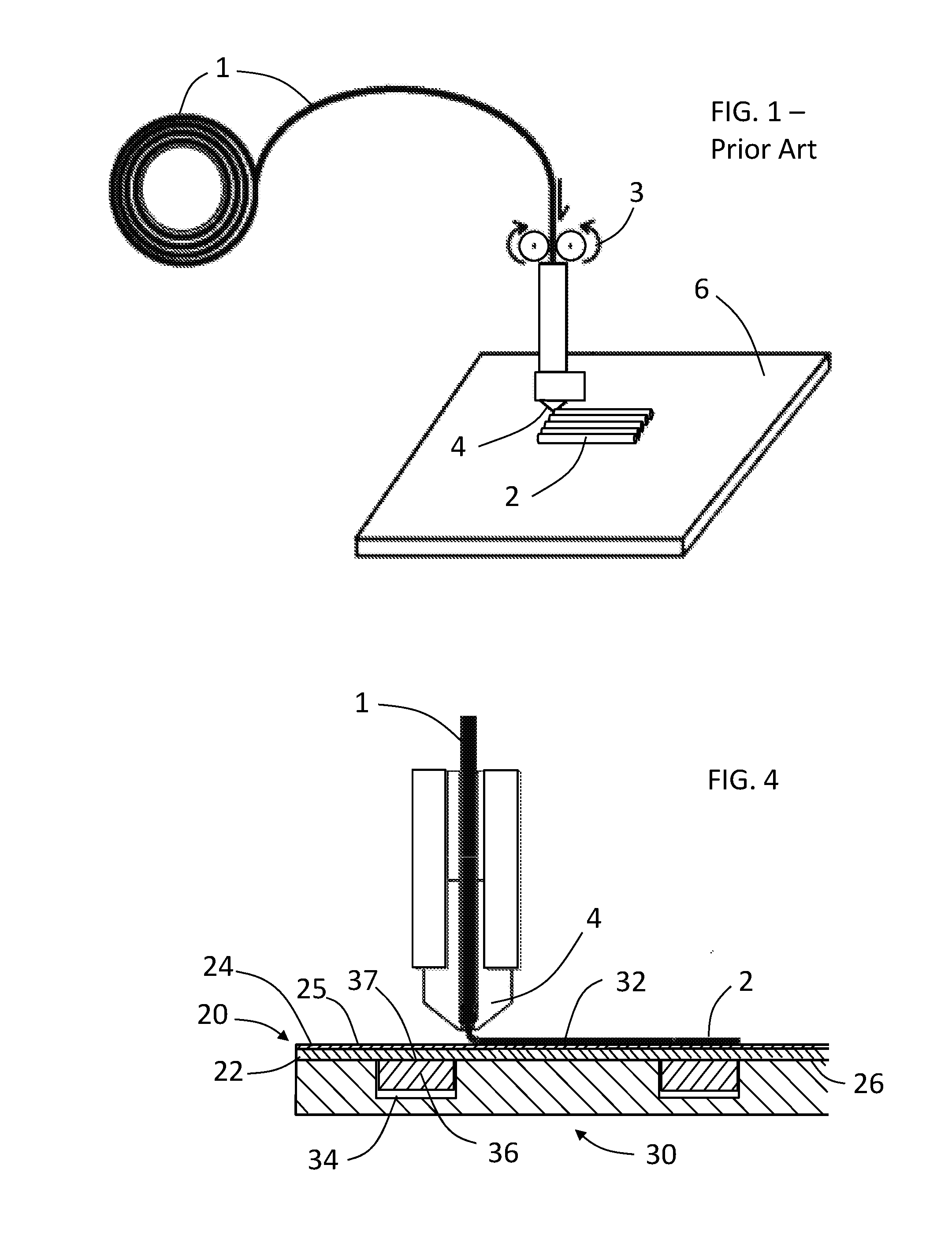3D Print Bed Having Permanent Coating
a 3d printer and print bed technology, applied in the field of 3d printer print bed, can solve the problems of not being considered consumables, ideal suited, failed or poor quality printed objects, etc., and achieve the effect of high degree of adhesion
- Summary
- Abstract
- Description
- Claims
- Application Information
AI Technical Summary
Benefits of technology
Problems solved by technology
Method used
Image
Examples
formulation examples
[0077]Following are formulations of ingredients useful in making the curable coating compositions that are applied to a print bed substrate.
Formula 1AIngredientWeight %water73Epoxy (water based emulsion)5Acryclic Acid (water based emulsion)12Curing Agent1Isopropyl alcohol9Total100
Formula 1BIngredientWeight %water73Nano-clay (Montmorillonite Na+) / 0.1Other filler—Glasspowder / mica / pigmentsEpoxy5Acryclic Acid (water based emulsion)12Curing Agent1Isopropyl alcohol8.9Total100
Formula 2AIngredientWeight %water72Epoxy (water based emulsion)5Carboxylated styrene-butadiene latex12emulsionCuring Agent1Isopropyl alcohol9Total100
Formula 2BIngredientWeight %water73Nano-clay (Montmorillonite Na+) / 0.1Other fillers (glass powder, mica,pigments)Epoxy (water-based emulsion)5Carboxylated styrene-butadiene latex12emulsionCuring Agent1Isopropyl alcohol8.9Total100
Formula 3AIngredientWeight %water72Epoxy (water borne / solvent borne)5Polystyrene solution in toluene12Curing Agent1Isopropyl alcohol9Total100
Form...
PUM
| Property | Measurement | Unit |
|---|---|---|
| Temperature | aaaaa | aaaaa |
| Temperature | aaaaa | aaaaa |
| Thickness | aaaaa | aaaaa |
Abstract
Description
Claims
Application Information
 Login to View More
Login to View More - R&D
- Intellectual Property
- Life Sciences
- Materials
- Tech Scout
- Unparalleled Data Quality
- Higher Quality Content
- 60% Fewer Hallucinations
Browse by: Latest US Patents, China's latest patents, Technical Efficacy Thesaurus, Application Domain, Technology Topic, Popular Technical Reports.
© 2025 PatSnap. All rights reserved.Legal|Privacy policy|Modern Slavery Act Transparency Statement|Sitemap|About US| Contact US: help@patsnap.com



